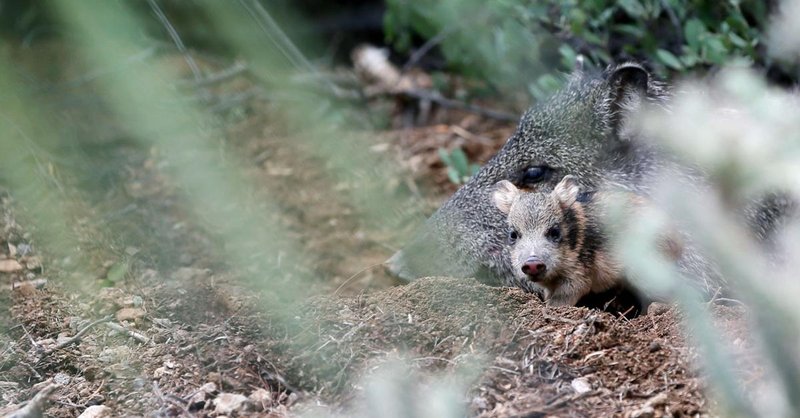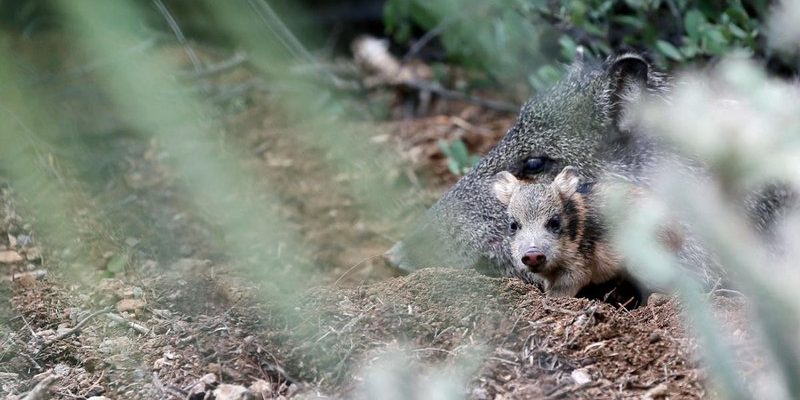
You might be wondering how these critters manage to not just survive, but thrive in places with extreme temperatures and scarce resources. Well, javelinas have some unique tricks up their sleeves! In this post, we’ll explore how they navigate their challenging ecosystems, avoiding threats and staying healthy. So, grab your favorite drink, and let’s dive into the wild world of javelinas.
Understanding Javelinas: The Basics
Before we get into the survival skills of javelinas, let’s cover some basics about these fascinating creatures. Javelinas are not true pigs, although they share some similarities. They belong to their own family called Tayassuidae. You can find them primarily in the deserts of Arizona, New Mexico, Texas, and parts of Central America. These animals are about the size of a medium dog, typically weighing between 40 to 60 pounds. Their coarse, bristly fur is usually a mix of brown and gray, which helps them blend into their surroundings.
Javelinas live in family groups known as sounders, which usually consist of up to 10 individuals. This social structure is important for their survival in the wild. Within the sounder, they collaborate to find food, protect each other from predators, and raise their young. It’s like an extended family unit, working together to tackle the challenges of harsh living conditions.
Adaptations to Extreme Temperatures
Living in desert environments means facing extreme temperatures—intense heat during the day and chilly nights. Javelinas have some practical adaptations to help them cope with these changes. For one, they are primarily crepuscular, meaning they are most active during the early morning and late afternoon when temperatures are more bearable. This behavior helps them conserve energy and avoid the sweltering heat of midday.
Another fascinating adaptation is their ability to regulate body temperature. Javelinas have a large, thick skin that helps protect them from the sun and retain moisture. To cool down, they often take dust baths, which not only helps with temperature regulation but also protects their skin from parasites. Honestly, who knew taking a dust bath could be such a genius survival tactic?
Finding Food in Scarce Environments
Finding food in a harsh desert environment can be a challenge, but javelinas have a diverse diet that helps them adapt. They are omnivores, which means they eat both plants and animals. Their diet primarily consists of:
- Cacti and other succulent plants
- Roots and tubers
- Fruits and berries
- Small insects and carrion
Javelinas have strong, sharp teeth that make it easy to crunch through tough plant material. They have a keen sense of smell, allowing them to locate food buried underground or hidden within vegetation. If you happen to see a javelina rummaging through the underbrush, it’s likely sniffing out a tasty cactus pad or some juicy berries. Their ability to adapt their diet based on what’s available is key to their survival.
Water Conservation Techniques
Water is essential for life, yet deserts can be notoriously dry. Javelinas have evolved some clever strategies to conserve water. They are excellent at extracting moisture from the foods they eat. For example, by munching on juicy cacti, they can hydrate while having a meal.
Moreover, javelinas can go for long periods without drinking actual water. Their bodies are remarkably efficient at retaining fluids, which means they need less water than many other animals. Still, when they do drink, they often head to the nearest watering hole, which can sometimes be miles away. You might wonder, how do they manage to find these water sources? Javelinas have a strong memory and can remember the locations of water from previous seasons.
Keeping Safe from Predators
Survival isn’t just about finding food and water; it’s also about avoiding becoming someone else’s dinner. In the wild, javelinas face threats from various predators, including coyotes, bobcats, and mountain lions. But they’ve got some tricks up their sleeves to stay safe!
First, their social structure offers protection. Living in groups helps them stay alert and fend off potential threats. If one javelina senses danger, it will communicate with the others through snorts and grunts, alerting them to the presence of a predator.
Additionally, their keen sense of smell and excellent hearing help them detect danger early. While they may not be the fastest animals around, they can navigate quickly through dense brush, using their knowledge of the terrain to escape threats. If push comes to shove, they can also defend themselves with sharp teeth and powerful jaws.
Mating and Raising Young in Tough Conditions
Even in challenging environments, javelinas manage to reproduce and raise their young successfully. The mating season usually occurs in late summer to early fall, and after a gestation period of about 5 months, female javelinas give birth to 2 to 4 piglets.
These piglets are born with their eyes open and can start walking within hours, which is essential for survival in the wild. The mother is very protective, often keeping her young close to the sounder for safety. Javelina young grow quickly and can start foraging for food with the family as early as a few weeks old.
It’s incredible how, despite the harsh surroundings, javelinas ensure the continuation of their species. Their resilience is a testament to nature’s adaptability.
Javelinas and Their Role in the Ecosystem
Finally, let’s talk about the bigger picture. Javelinas play a crucial role in their ecosystem. As they forage for food, they help disperse seeds and promote the growth of various plant species. This activity supports not only their survival but also the overall health of their habitat.
In some ways, you can think of javelinas as gardeners of the desert. They dig up roots and disturb the soil, creating a better environment for new plants to grow. Their presence supports a wide range of other species, from birds that rely on the seeds they scatter to larger predators that depend on them as a food source.
Javelinas truly demonstrate the interconnectedness of life in their harsh environments. Every species, big or small, plays a role in keeping the ecosystem balanced.
In conclusion, javelinas are remarkable survivors in harsh environments. With their clever adaptations, social structures, and resilience, they thrive in the deserts of the Southwest. The next time you think of survival, remember these fascinating creatures and their incredible ability to navigate the challenges of their world!

